In this month’s blog, Noel Mather revisits his younger years working as a tree faller on Surrey Hills. Noel virtually grew up with an axe in his hand. He commenced work on Surrey Hills in 1955 when systematic logging first started under APPM stewardship. He got to work in the pick of the timber stands. Unfortunately, he lost some close workmates in tree falling accidents, and he was lucky he didn’t suffer the same tragic end after a close call on Surrey Hills. Here is his story.
My father cut and sold firewood, and I virtually grew up with an axe in my hand. I had a lot of time in the bush, both falling and driving log trucks. I worked in the bush on and off for about 15 years.
In the middle 1950s, when I was 19, I started working with Len Bugg and Merv Munday. I considered them the best fallers on the North West Coast. Bill Singline contracted us to fall for ‘the Pulp’.[1] Bill had two Mack trucks he used for carting the logs from the logging operations. We were falling in the Blythe Road area east of the Main Road of Surrey Hills, now known as Needham Avenue. This road went as far as the Blythe River, where we had our camp. From there, a bulldozer track went through to the Leven River. There were some magnificent trees to fall, some 120 feet to the first limbs.
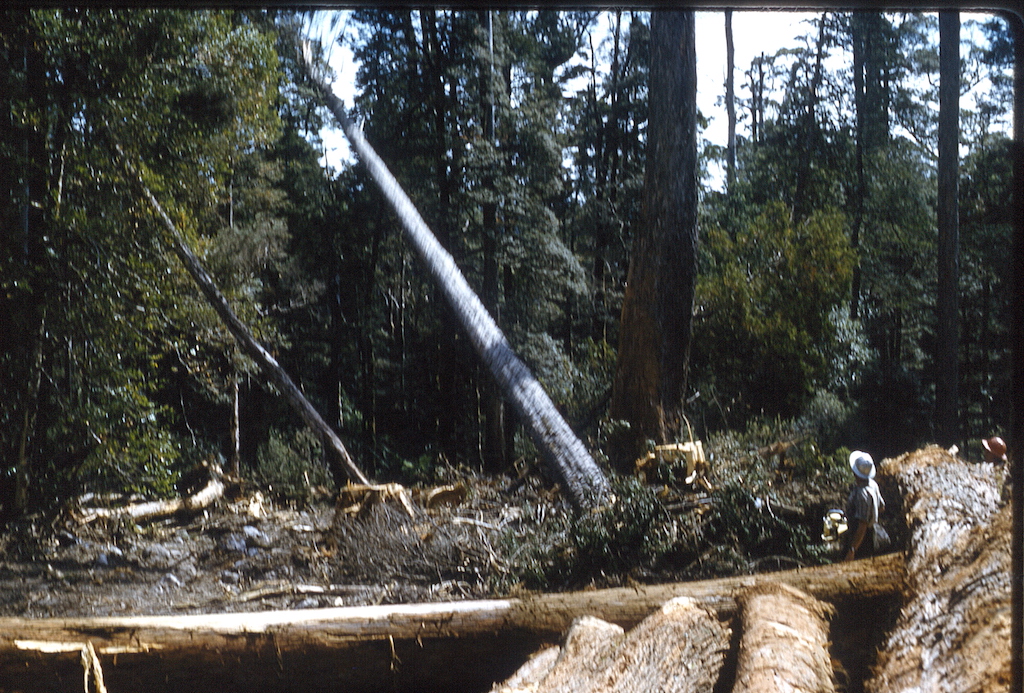
When I first started, we used an axe and crosscut saws, just before the advent of chainsaws. We purchased three Danarm chainsaws[2] from John D Loane Pty Ltd in Burnie.[3] We had trouble getting them to cut. They had what we called chisel chains which we sharpened with a flat file, then later came the chains similar to the ones used today. They were a hundred times better.
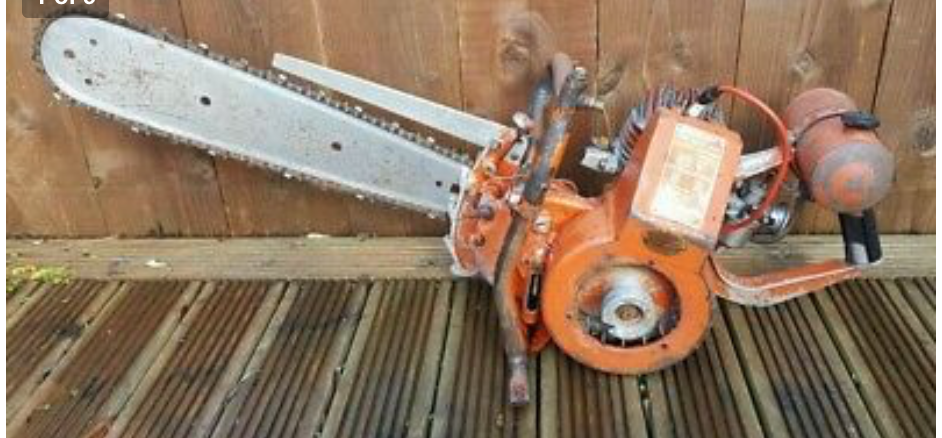
At the time, we were paid 2 shillings a 100 super feet, and on our best days, we were falling about 50 thousand super feet a day worth 50 pounds. We were also paid for short butts. If we felled a tree and it had a rotten butt, each cut was paid for until we struck solid timber. Each month someone came around and measured these cuts, and we got a short butt cheque.
We left Burnie on Monday mornings and picked up our meat and groceries at Ridgley on the way. We worked until Wednesday night when we sometimes went home or, more than often, we went to Guildford Junction to have a few beers with Frank Burridge at the refreshment room at Guildford Junction. Mrs Burridge would cut a plate of those famous ham sandwiches. Sometimes there would be six or eight fallers drinking in the bar. We worked from 7 am until dark. We couldn’t afford to worry about the weather – rain, snow or shine we had to keep the log trucks going.
Len Bugg left the crew to go harvesting huon pine stands on the Denison River near Strahan that was going to be flooded.[4] Merv’s brother Keith replaced him. Ted Crisp was the forester-in-charge, and he would come around and mark the better trees as seed trees. After we had finished falling an area, bulldozers would rip the ground to aid in regeneration. I believe some of the natural regrowth trees grew quite big. Some of the trees were very big. We had to cut a big piece out of the front of the tree and go inside with the chainsaw to put a cut further in.
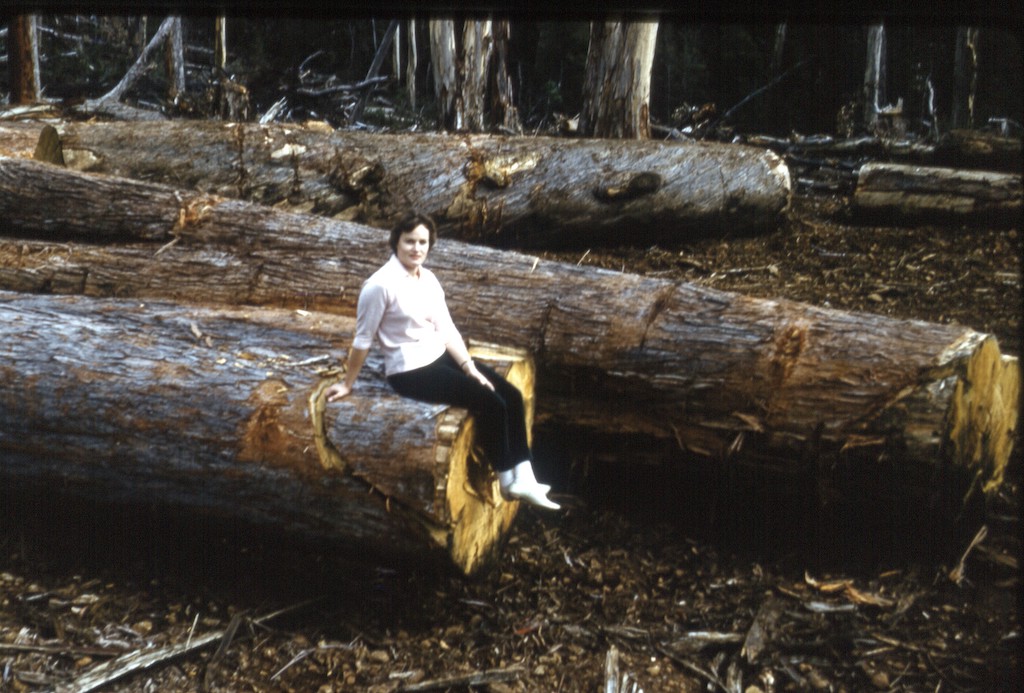
Reg (Bull) Needham was the AFH boss, and at one time, he bought a new Ford Fairlane.[5] My boss Merv Munday bought Needham’s trade-in vehicle. It didn’t go down too well when Reg saw Merv in his old car. “What are those fallers doing driving the same car as me?” he asked. “They are earning too much money.” It wasn’t long before our short butt cheques stopped, and the falling rate was cut from 2 shillings to 1 shilling and 4 pence a 100-feet which was quite a significant price cut.
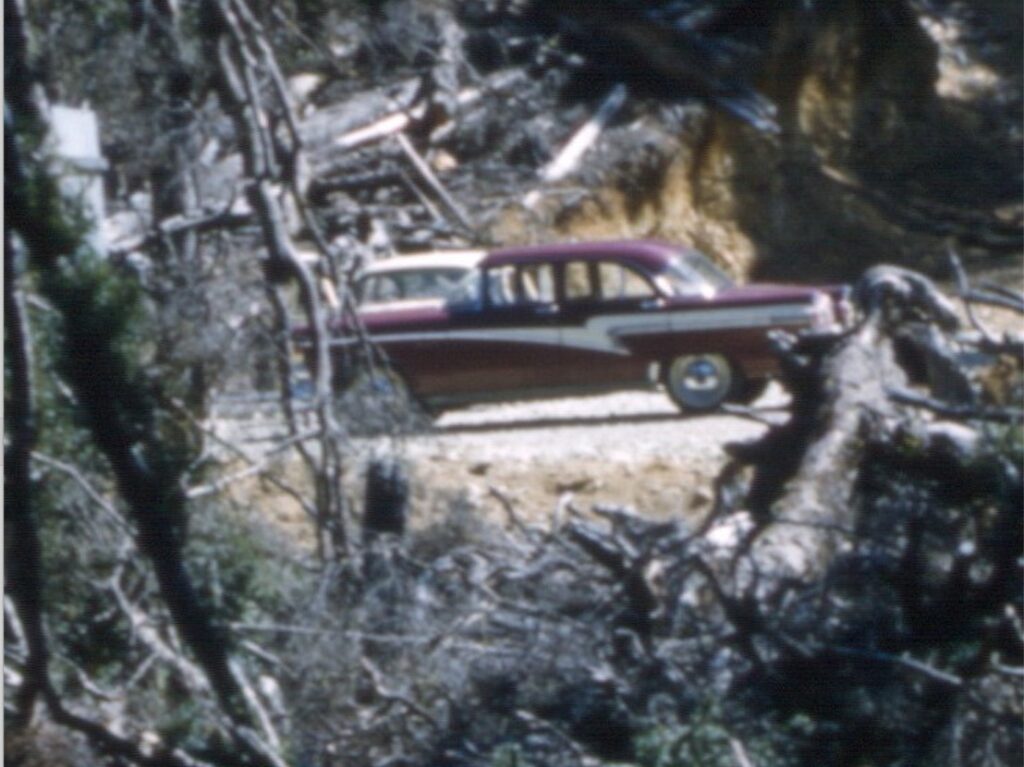
We even spent a season falling in Victoria for Ernie Hug, who had a sawmill at Heyfield in the Gippsland. It was an experience.[6] We worked in very hilly and steep mountain ash (Eucalyptus regnans) country, falling for two weeks before the first log trucks arrived. It was past Licola near Lake Tali Kharng.[7] It was the first time I saw log trucks with water jackets around the brakes to keep them cool.
I entered wood chopping events when I was 24. I won my first ever wood chop in the Mugs event at Forth. I also won a 10-inch event at Grassy on King Island a couple of years later. I gave it away when I was still young and after my accident.
Accidents were a fairly common thing in the tree falling game. Many years ago, a lot of fallers and good friends had been killed. I was one of the lucky ones. A good faller called Jimmy Rawlings once got me to do his job for two weeks while he went to the hospital. Ray Bissett, who was carting for Jimmy, picked me up in his log truck early on a Friday morning from Burnie and took me and my gear to the Racecourse area on Surrey Hills. When we got there, another truck was waiting with no logs on the skidway. The coupe was thick with pepperbush scrub. Straight away, I was in a rush to fell a big tree close by because the trucks were waiting. The tree I selected was a bit rotten, and I was cutting the butt off when a small tree hit me. The boys were calling out to warn me, but I didn’t hear them because of the noisy chainsaw. The tree I felled hit a small dry tree that fell on me and the log simultaneously, which probably saved me. I was lucky that the tree I was cutting was big enough to take some of the impacts of the falling dry tree. I finished up in Burnie Hospital for three weeks. I had a broken shoulder, collarbone, right upper arm and several bones in my neck. I was in plaster from my neck to my waist for about three months. I could not work for the best part of a year, and when I returned to work, I had a stint as a barman at the Burnie Hotel.
I later returned to falling tree working for Mick Donahue, who carted logs to the Pulp and Wilf Campbell near Cradle Mountain, cutting King Billy pine (Athrotaxis salaginoides) for his mill. I also did some felling for Ron Buckingham at Riana and drove log trucks for Ernie Holloway carting from Surrey Hills. I also felled myrtle (Nothofagus cunninghamii) for Sam Wilson at Mawbanna with a two-man Blue Streak chainsaw.[8] Falling in those days was hard work. You only learnt from experience, not like today where all you have to have is a licence and safety gear.

Despite my accident, I still enjoyed my time falling trees at Surrey Hills.
[1] The Burnie Pulp and Paper Mill was commonly referred to as ‘the Pulp’ by all those associated with it.
[2] The first Danarm chainsaw was built in 1941. Around 1954, the Denarm model DD8F chainsaw was introduced, incorporating the Villiers 98cc ‘8F’ 2-stroke engine. The saw weighed about 13kg and featured a diaphragm carburettor which enabled the saw to be used easily by one man at any angle. This model became famous worldwide.
[3] John D Loane Pty Ltd was a long-established Burnie firm which mainly sold farm implements. They were renowned for having the most varied and comprehensive exhibits at the annual Burnie Show.
[4] Huon pine (Lagarostrobos franklinii) harvesting, or pining, started in south-west Tasmania in the 1850s. Until the 1870s, operations were confined to the Port Davey area and the Gordon River. The 1880s to the 1930s were the peak of huon pine logging which correlated with the west coast mining boom. The main pining in the middle Gordon, at least in the area of the Denison River, was not carried out until the 1950s and 60s.
[5] See page 138 of my book “Fires, Farms and Forests” for more details on Reg Needham’s work cars.
[6] Ernie Hug owned sawmills in Heyfield. His eldest son (also Ernie) was a ruckman for Collingwood in the VFL from 1963-70 and was known for his physique – standing 6’4” and weighing 87kg he was renowned for his enormous hands which spanned 28cm. Tragedy struck the family. In 1977, Ernie Snr was killed in a level crossing accident and Ernie Jnr died in a logging accident at just 34 exactly a year later. Even more tragic is Ernie Jnr’s son, another Ernie, was drafted to Collingwood but never played a senior game. He was playing for Sale in 1993 when he was hit in the throat and suffered temporary paralysis. Years later, and just after he had returned to the field, his brother Peter died in a football match after an accidental collision.
[7] Licola is in the McCallister River Valley north of Heyfield. The timbered country around the Lake where Noel logged is now within the Alpine National Park. Licola is a former timber town now servicing the bushwalking and 4wd fraternity that visit the Alpine National Park.
[8] The Blue Streak two-man chainsaw was made by C.C. Engineering in Sydney under licence to I.E.L. in Canada around 1950. The working length of the cutter bar was 4ft (1.2m) and the overall length was 8 ft 6 inches (2.6m), although bars were available up to 11 feet. They weighed over 50 kg. The cutter bar can be rotated on the engine to allow the Villiers carburettor to stay vertical at any cutting angle.
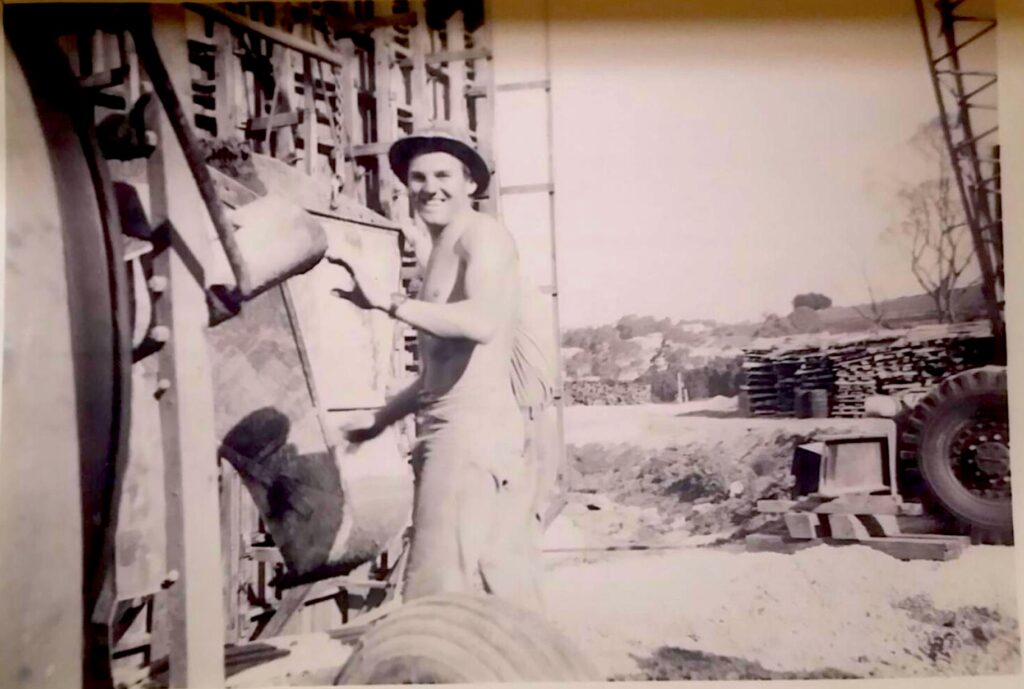
Great reminiscences of times past. Well done Noel, it was great for Forico to host your visit to the Surrey Hills Estate.
Thank you Noel for your article, and to Forico and you Bryan, for your forward thinking in facilitating an environment where we can look back at what was.
It is to be remembered that what is today has been achieved through the lessons of yesterday.
Thanks very much. It was very interesting to return but it was hard to find anything of the past.
A nice read of earlier times.
As a young cadet chemist at the Pulp in the early 60’s, I used to test the chips that came through the AFH Sawmill and also through the Woodroom. Wiff Ansell was the woodroom foreman and the wood came in on trucks and train in split form. The tests were to check the chippers were cutting it to correct size for pulping. I remember in summer, when much of the wood was coming from the rain forests, it was around 50% myrtle. My uncle Jim Blacklow was a logger, with a Rio truck, for the pulp from 1948-52 after we all moved from the West Coast. He was also a competitive axeman.
He then moved to Rossarden to log for his brother Doug’s sawmill which supplied the mine with timber for the stopes.
Great article, Uncle Noel! I had no idea that you’ve had such an adventurous life and career. Thanks for sharing!